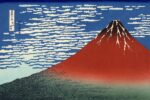Hugo Canoilas – Opere nomadi
Nella sua prima personale in Italia, Hugo Canoilas mostra nuovi lavori di pittura con assemblaggi di testo e oggetti, perseguendo la sua ricerca sull’espansione della pittura e sulle possibilità verbali dell’ oggettività. Opere nomadi in tempi di povertà e necessità, stabiliscono reminiscenze forti e intriganti di Arte Povera.
Comunicato stampa
Nella sua prima personale in Italia, Hugo Canoilas mostra nuovi lavori di pittura con assemblaggi di testo e oggetti, perseguendo la sua ricerca sull’espansione della pittura e sulle possibilità verbali dell’ oggettività. Opere nomadi in tempi di povertà e necessità, stabiliscono reminiscenze forti e intriganti di Arte Povera. Secondo ciò che l’artista dice:
“Alcuni testi sono realizzati su tele già dipinte, ciò mi sta molto bene, ma richiede un’enorme precisione tecnica nel modo in cui vengono sovrapposte ad altri tessuti e quindi stese tra le estremità del telaio in legno. Sì, tra le estremità e non ai lati, perché io taglio le tele in modo da lasciarle libere lateralmente. Sto ancora combattendo contro l’ortogonalità delle
tele, nel tentativo di rendere più familiare a me stesso il mio corpo, le forme rotonde, non fisse e libere da ogni forma di razionalità.
I testi sulle tele sono estratti da libri che sono in giro nel mio studio: alcuni titoli di rappresentazioni o parti di testi su Kaprow, Braci di Becket, Sotto il vulcano di Lowry.
I testi dipinti rappresentano l'interruzione dell'atto pittorico. Oggi dipingere le parole e fluttuare tra i testi mi impone un tempo di riflessione di azione diverso, più lungo.
I dialoghi e le descrizioni di ambienti dello spazio diventano un tutt’uno con me stesso. I dipinti all’inizio sembrano semplicemente una struttura atta a ricevere il testo ma alla fine estendono le mie possibilità di fare pittura. Le tele sono sospese con cavo da pesca metallico e tenute nella loro posizione da un peso, che insieme, tracciano un disegno sul terreno
con il movimento degli osservatori che cercano di trovare affinità elettive tra i testi.
contemporaneamente si possono trovare vari oggettti e le loro relazione ad una parola: scarpa, bicicletta e pietra e un’altra – una forchetta conficcata in una parete che si chiama J’ai faim (ho fame)
Il testo è come se avesse un suono interno, una voce; diventa più teatrale che un dipinto. Le tele sembrano gridare: Tutto eccetto la pittura. Ma non possono fare a meno di essere dipinti”.
________________________________________
In his first one-man exhibition in Italy, Hugo Canoilas shows new works of painting with text and object assemblages, pursuing his research on the expansion of painting and the verbal possibilities of objecthood. Nomadic works in times of poverty and necessity that establishes intriguing and powerful reminiscences of Arte Povera. As according to the artists statement:
"Some texts are painted on already painted canvas, that fits me very well, but which will require great technical accuracy in the way they are bonded to other fabrics so they can be stretched on the tops of wooden frames. Yes, on the tops and not the sides of the stretches because I cut the canvas in order to let them loose. I'm still fighting against the orthogonality of the canvas, trying to approach myself to my body, to round shapes - not fixed, to things free from the rational. The texts on the canvas are excerpts from books that are around the studio: some titles of performances or parts of texts on Kaprow, Embers by Becket and Lowry’s Under the Volcano. The texts on top of the paintings are the suspension of the activity of painting. One spends more time floating over the texts of each book and spends even more time on each word depicted. The dialogues and descriptions of space environments are embodied. The paintings seem at first just a structure to receive the text but by the end they are stretching my possibilities of doing so. The canvas are suspended with metal fishing wire and hold in their position by a fishing weight, that altogether, mark a drawing on the ground and the movement of the viewers who try to make elective affinities between texts.
In between one can find several objects, direct in their connection to a word: Shoe, bicycle and stone and another - a fork stuck in a wall which is called J'ai faim.
The text brings an inner sound, a voice; it becomes more theatre than painting. The paintings seem to cry: Everything but painting. But they cannot help but to be paintings".



